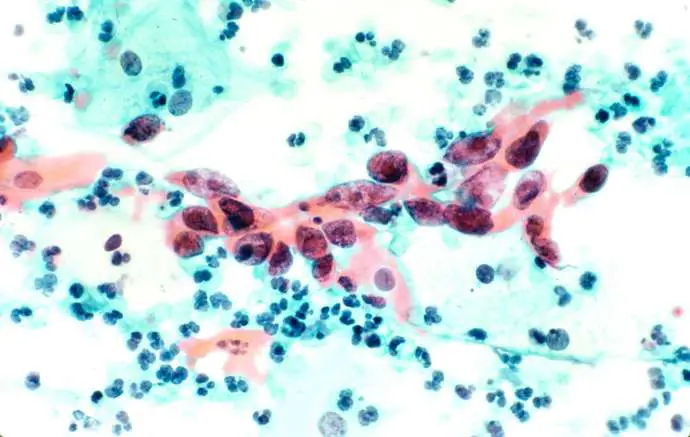STA, 21 January 2020 - Slovenia is one of the most effective EU countries in fighting cervical cancer, mostly due to its successful ZORA screening programme. Moreover, prevention efficiency has been boosted by a steady increase in the human papilloma virus (HPV) vaccination rate among girls.
The vaccination rate for eleven-year-old girls has increased by 10 percentage points to nearly 60% last year, health officials said on the occasion of the European Cervical Cancer Prevention Week.
The lowest rate was recorded in the Ljubljana region, bellow 50%, and the highest in the Koroška region, at 87%.
Experts are pushing for the vaccination to be free of charge also for boys. The proposal has been drawn up by the National Public Health Institute, pending approval by health and public health fund authorities.
Some municipalities, especially in Koroška, are funding vaccination for boys themselves.
According to Leon Meglič of the gynaecology unit of the UKC Ljubljana hospital, at least 90% vaccination rate is required to eradicate the disease not only among girls but in the entire population.
HPV infection, one of the most common sexually transmitted diseases, causes more than 99% of cervical cancers but also the cancers of the throat, anus, and penis.
Ideally, girls should get the vaccine before becoming sexually active, but as of last year, girls born after 1998 who were not vaccinated when they were 12, can still get the vaccine free of charge in Slovenia.
Last year, 420 girls and 38 boys were vaccinated in a four-day campaign, said Mojca Miholič from the Ljubljana Student Health Centre. Some 60% of the girls received the shots free of charge.
Meanwhile, women, including those over 50, are urged to get screened regularly, as cervical cancer discovered in its early stages is often easily curable. Cervical cancer incidence has halved since the launch of the ZORA prevention programme in 2003.
Some 120 women in Slovenia are diagnosed with the disease every year, one of the lowest rates in Europe, which is quite an achievement given the country used to have one of the worst statistics in Europe on cervical cancer incidence, according to Urška Ivanuš from the Ljubljana Oncology Institute, who heads ZORA.
According to Meglič, no other country has made such progress in such a short time.






